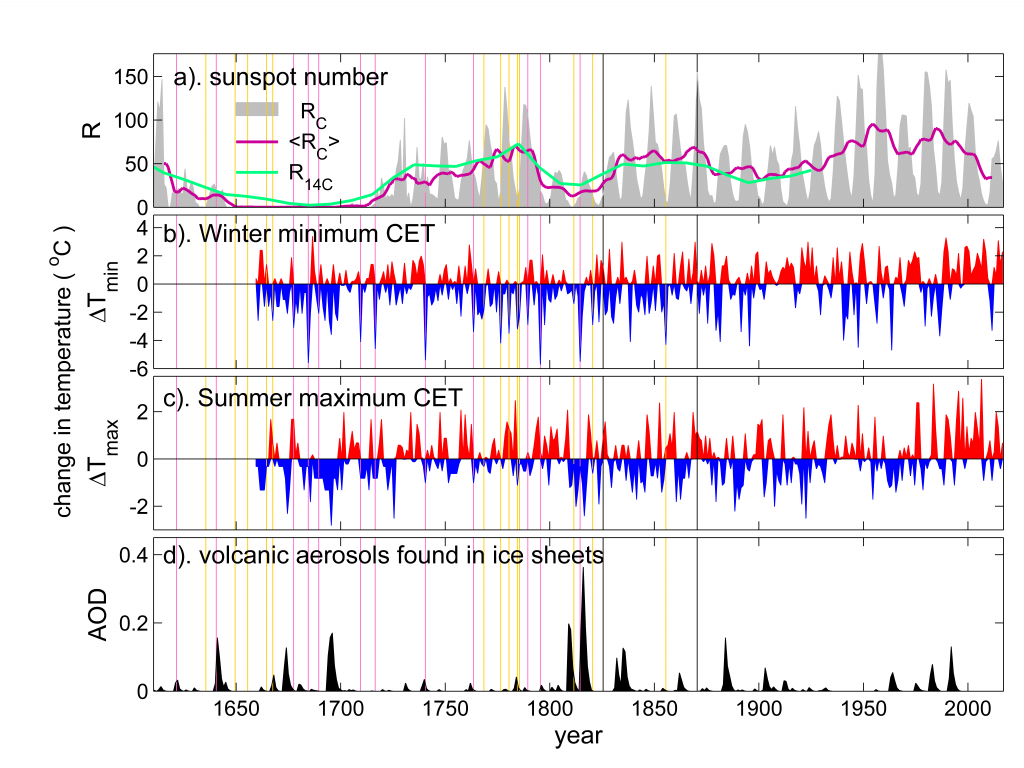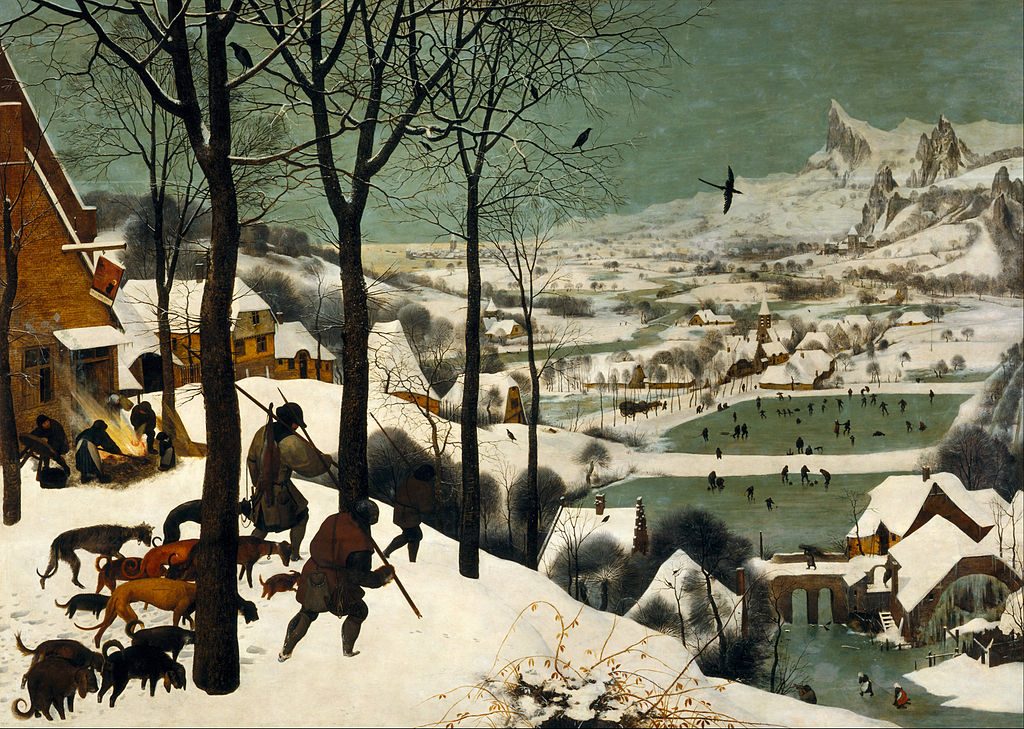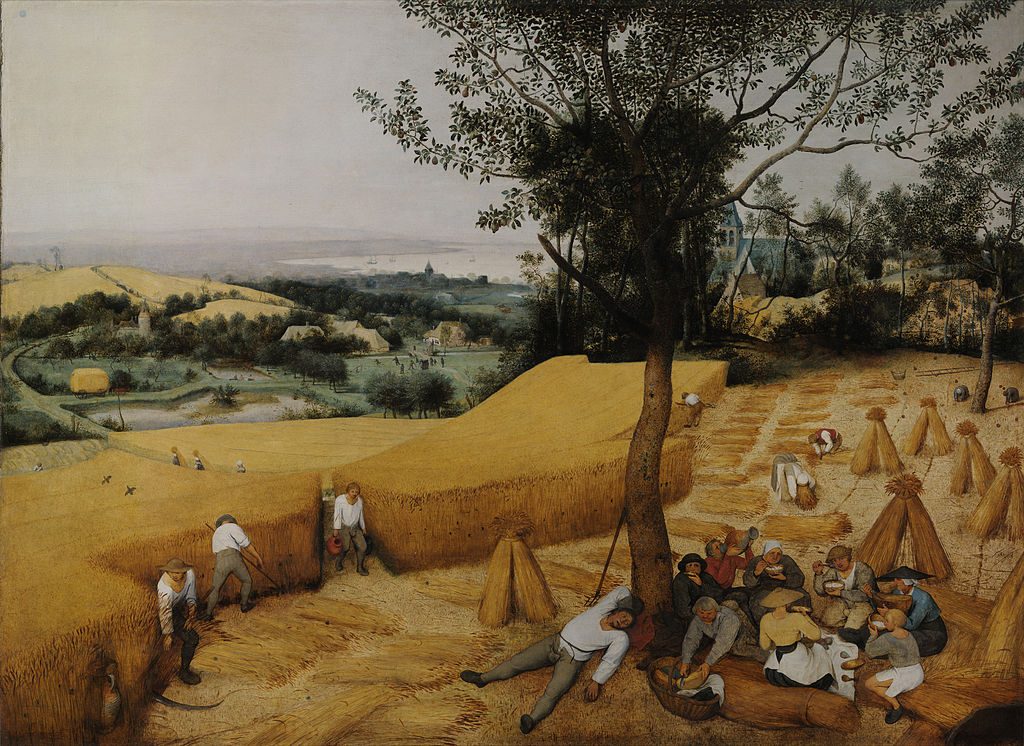The term ‘Little Ice Age’ refers to a period of cooler temperatures between around 1400 and 1850, although a range of dates are used. This climate feature has been inferred from various types of direct and indirect evidence, but it is still not clear how widespread these cooler temperatures were.
A new article by Lockwood et al explores some of the commonly used indirect evidence such as paintings and the occurrence of ‘frost fairs’ on the Thames. We also address the common assumption that the cooler temperatures were solely due to a reduction in solar activity (the Spörer and Maunder minima). Although this assumption is almost certainly wrong, the two features are sometimes considered to be synonymous.
A painting in 1565 by Pieter Bruegel the Elder called ‘Hunters in the Snow’ showing very snowy conditions is often used to depict the era, and to suggest that this was a period of unremitting cold. What is less well known is that Bruegel painted 12 scenes that year – one for each month. The snowy scene represents ‘January’, but ‘August’ shows harvesters gathering crops on a warm summer day. The paintings for ‘February’, ‘July’ & ‘November’ also do not depict especially cold conditions, but the other seven have been lost.
Other evidence comes in the form of the known ‘frost fairs’ on the Thames in London, such as the one depicted above from 1684, which is during the Maunder minimum. The first use of the term ‘frost fair’ appears to be 1608, but there are numerous surviving records of the Thames freezing over before then, including in AD 250, 695, 923, 1150 & 1309, although these records are likely to be incomplete.
There is good agreement between years where written records indicate the Thames froze, with or without a frost fair (vertical lines in figure below), and observed cold winter temperatures in Central England, as you might expect. These occur both during the Maunder minimum (roughly 1645-1715) but also before and after. There is far less coherence with cold summer temperatures, unless there had been a large volcanic eruption. In those years, both summer and winter temperatures are often cold.

Thames freeze years are slightly more frequent before the Maunder minimum began and also considerably more common 65 years after it ended. Other social and physical factors also played a part in whether frost fairs were allowed, even if the river froze. For example, there is only one known instance of the (tidal) Thames freezing after the demolition of the old London Bridge in 1825, even though temperatures were as low as during the LIA in some subsequent years. Any synonymous association of the solar minima and frost fairs ignores the role of these other factors.
Comparison with widespread paleo-data, such as tree rings, highlights that winters in which the Thames froze are not at all good indicators of the hemispheric or global mean temperatures (see more details in the article). Although the LIA covers both the Spörer (1420-1550) and Maunder solar minima, it also persisted and deepened during the active solar period between these two minima.
Global temperatures were probably slightly cooler during the extended LIA period, but this is due to a complex mix of factors, including a large influence from volcanic eruptions. Over Europe the solar minima may have slightly increased the chance of cooler winters, but it is certainly not the only, or even dominant factor. The commonly discussed paintings and frost fairs from the era are not, on their own, a good guide to broader climate variations.
Further reading:
– Jones (2008)
– Lockwood et al. (2016)
– Jones & Mann (2004)



The paintings of Hendrick Avercamp depict frost fair like panorama’s in the Netherlands
See also van Oldenborgh et al, “Claim of solar influence is on thin ice: are 11-year cycle solar minima associated with severe winters in Europe?”, ERL 2013 (http://iopscience.iop.org/article/10.1088/1748-9326/8/2/024014/). Negative results are not cited very often.
Thanks Geert Jan – we’ll add these references to our next paper on the subject (in review).
Ed.